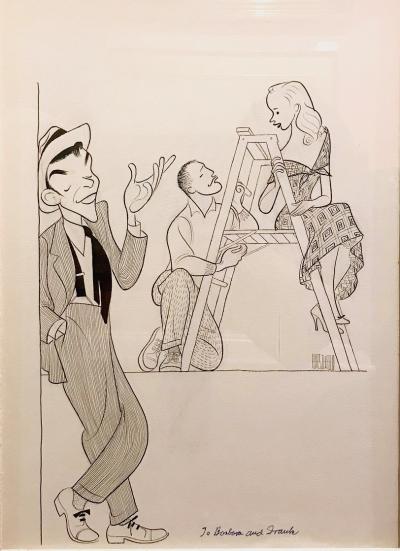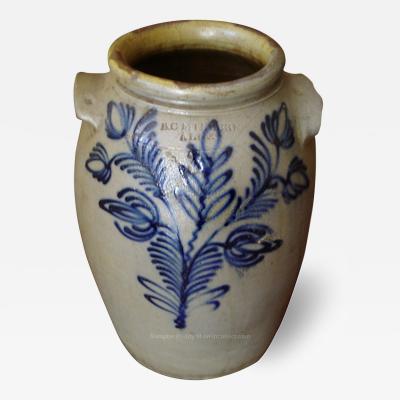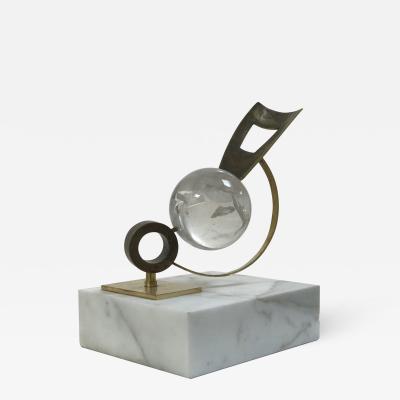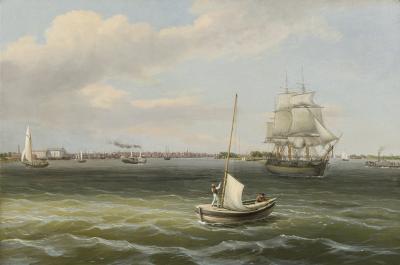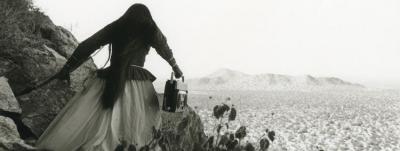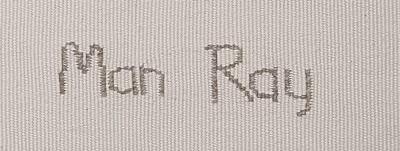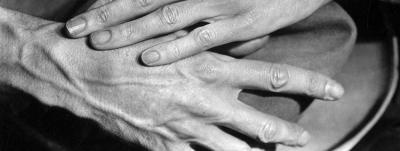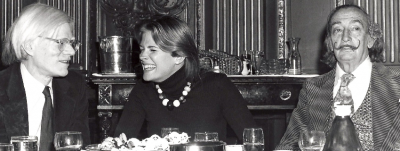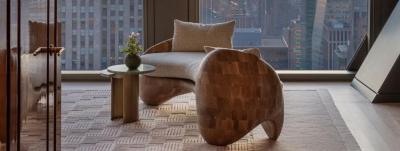1934: A New Deal for Artists
This archive article was originally published in the Spring 2009 issue of Antiques & Fine Art magazine.

- Fig. 1: Ross Dickinson (1903–1977),
Valley Farms, 1934.
Oil on canvas, 39-7/8 x 50-1/8 inches.
Smithsonian American Art Museum,
transfer from the U.S. Department of Labor.
When Franklin Delano Roosevelt was inaugurated President in March 1933, the United States of America was in crisis. The nation had fallen into a profound depression after the stock market crash of October 1929. Thousands of banks and businesses failed. A quarter of the work force was unemployed, while an equal number worked reduced hours. Farmers battled drought, erosion, and declining food prices. Across America, people were fearful of what the future might bring.
The new administration swiftly initiated a wide-ranging series of economic recovery programs called the New Deal. New agencies administered efforts to solidify American banks and businesses and to provide food and work to millions. With the hard winter of 1933–1934 looming, the Roosevelt Administration founded the Civil Works Administration to create immediate employment for some four million people in public works projects all over the nation. In dealing with such a colossal volume of need, the government could easily have ignored the nearly 10,000 unemployed artists who faced destitution.1 But that would have deprived the nation of the unique contributions those artists could make to an America struggling to climb out of the Great Depression. As artist George Biddle (1885–1973) wrote to President Roosevelt in 1933, many American artists were eager to “express in living monuments the social ideals that you are struggling to achieve.”2 Federal Emergency Relief Administrator Harry L. Hopkins allocated over a million dollars from the Civil Works Administration to provide relief for artists. As he said in response to criticism, “Hell! They’ve got to eat just like other people.”3
On December 8, 1933, the Advisory Committee to the Treasury on Fine Arts met to decide the details of the Public Works of Art Project (PWAP), the first of the New Deal art programs. Its success paved the way for the Section of Fine Arts (1934–1943) under the Treasury Department, the Treasury Relief Art Project (1935–1938), and the Work Progress Administration’s Federal Art Project (1935–1943). The PWAP came at a crucial moment for federal support of the arts during the Great Depression. As artist Olin Dows (1904–1981) recalled, “If the first crash [i.e. Depression] art program had not been so carefully thought out and expertly organized, I doubt that other programs would have been undertaken. The man mainly responsible was Edward Bruce.” Bruce, an advisor to the Treasury Department, hosted the meeting at his home. First Lady Eleanor Roosevelt was present as were such arts leaders as Juliana Force and Forbes Watson, who worked with Bruce to organize the Public Works of Art Project.4
Employees and volunteers went to work immediately. Within days sixteen regional committees were recruiting artists who eagerly set to work in all parts of America.5 They gave priority to those most in need, but also to those whose backgrounds promised they could produce art of importance. The first checks went out to artists on December 16th.6 Harry Gottlieb (1895–1993) of the Woodstock, New York, art colony wrote to Edward Bruce expressing the enthusiasm common to those in the program. “Every artist…is so keyed up to the importance of the situation, amounting practically to a revolution for him, that he is without exception, putting every ounce of his energy and creative ability into his work as never before.”7
The program lasted six months. Between December 1933 and June 1934, the PWAP paid a regular wage to 3,749 artists who created 15,663 paintings, murals, prints, drawings, sculpture, and craft works. The art was displayed in schools, libraries, post offices, museums, and government buildings. The subject matter that PWAP suggested as appropriate was “the American Scene,” though artists were allowed to interpret the idea freely.8
Working at a time when travel was difficult and neighbor depended on neighbor, it is no wonder that most PWAP artists chose to represent their home towns; their works express a pride that bolstered the regional focus of much American art of the 1930s. PWAP artists often represented local businesses and industries, from a coal mine in New Mexico to a marble quarry in Vermont. Even the New York City scenes have a regional flavor in their close studies of particular areas of Manhattan or Brooklyn.
Paintings display the glories as well as the troubles of landscapes and cityscapes across the country. In the agricultural communities of California, there was an onslaught of hopeful farm hands from all over America who sought far more jobs than were available. The farmers themselves were facing climactic hardships that were affecting their crops and their very own survival. California native Ross Dickinson (1903–1977) in Valley Farms (Fig. 1) painted a Southern California landscape where farmers struggled to keep their irrigated farms lush to avoid the threat of fire. In Dickinson’s painting, the stark hills seem to threaten the farms at their feet. Dickinson dramatized his home state’s eternal confrontation of nature and man by exaggerating the steep slopes of the hills and the harsh contrast between the dry red wilderness and the green cultivated land. The artist also stressed the centrality of water in California; a river, milky with pale silt, is a livid curve against the verdant valley. This richly colored, panoramic view is typical of Dickinson’s landscape paintings of his home state during the 1930s.
Some paintings were as timely as news reports. New York painter Saul Berman’s (1899–1975) River Front (Fig. 2) shows the dry docks of Brooklyn during the labor problems of early 1934. The old brick building in the foreground displays the Blue Eagle symbol of the National Recovery Administration in its window to indicate that the lumber company adheres to the NRA’s codes for prices, wages, and work hours. The NRA was intended to help both business owners and workers, but the 1933 negotiation of NRA codes set off strikes in many industries and the shipbuilding business was no exception.9 In early 1934, after the strikes were settled, New York shipyards still lacked work and pleaded for federal government projects to keep men employed.10 When Berman painted the docks the workers would have had nothing better to do than clear away snow, just as Berman depicts them.
Other paintings of 1934 reflected a variety of government programs that had an impact on the lives of Americans. While some artists depicted buildings constructed with funding from the Civil Works Administration (CWA), other PWAP artists followed the Civilian Conservation Corps laboring to improve National Parks and roads. In New York State, both local and national programs like the CWA led to the construction of new roads and other improvements to travel infrastructure.11 A painting that an unidentified artist made over a photograph (Fig. 3) shows a newly built underpass designed to safely route cars under the train tracks in Binghamton, New York.12 The detailed depiction shows the clean lines of the new concrete construction as an approaching vehicle would have seen it at night. Other paintings over photographs showing similar scenes in other parts of the country were also made but it is has not been possible to identify the photographers or artists involved. What is clear is that such paintings documented new federal projects that changed the lives of people across the nation.
Far to the south the black cotton workers in Earle Richardson’s (1912–1935) Employment of Negroes in Agriculture (Fig. 4) might not have lacked jobs, but they suffered from prejudice, low pay, and the inability to get out of a degrading racially biased system made even worse by the Depression. The Public Works of Art Project welcomed African-American artists like Earle Richardson who would paint “Negro themes.” Yet the PWAP counted only about ten such artists among the thousands they employed.13 Richardson was also unlike many of his fellow PWAP artists in that he depicted scenes far from his home. A native New Yorker, Richardson elected to set his painting in the south in order to make a broad statement about race. He depicted black workers with a strength and dignity lacking in previous representations of black southern agricultural workers.
By no means do all PWAP paintings show serious scenes of work. More than ever during the Great Depression, Americans needed distractions to help them forget their troubles. Agnes Tait (1894–1981) showed her fellow New Yorkers having a glorious time Skating in Central Park (Fig. 5). Like many PWAP artists, Tait found the patronage of the Project freeing. She wrote to Juliana Force, head of the New York region of the PWAP, “The picture is one that I have long had in mind, but on account of various working difficulties and the time to devote to it never having been available, I have not felt justified in attempting it. It is possible now only thru the opportunity given me by your committee.”14
Art made in 1934 outside the PWAP also reflected the Depression era’s appetite for entertainment, as well as a focus on distinctive local activities. Stadium lighting was still rare in 1934 when Morris Kantor (1896–1974) painted a night baseball game in the little town of West Nyack, New York (Fig. 6). The novelty of the colorful scene caught the eye of the artist, who wrote that he strove to convey in his painting “the panoramic spectacle of the field, the surrounding landscape, the people, the players, and the nocturnal atmosphere.”15 Kantor visually compresses the field to fit all this into his painting, along with a radio booth, flags waving against the night sky, and a runner taking his lead off first base.
PWAP artists captured a variety of daily routines characteristic of where they lived. In Subway (Fig. 7) Lily Furedi (1901–1969) created a sympathetic view of her fellow New Yorkers taking their daily ride below the streets of Manhattan. She focused particularly on a musician who has fallen asleep in his formal working clothes, holding his violin case. The artist would have identified with a musician because her father, Samuel Furedi, was a professional cellist.16 Such depictions of urban New York abound in PWAP works, since there were far more artists working in the New York region than in any other.
Artist E. Martin Hennings (1886–1956) chose to celebrate the West, painting images of Native American life and the Southwestern landscape. Though much of his early life was spent in Chicago, he moved permanently to New Mexico in 1921 at the age of thirty five, becoming a member of the Taos Society of Artists three years later.17 Hennings felt a deep love for Taos in particular. In his painting Homeward Bound (Fig. 8) he painted two Native Americans from Taos Pueblo, the man wrapped in a traditional white blanket while the woman wears a colorful shawl.18 Hennings linked the two figures to their home landscape by likening them to the tall native sunflowers that stand behind them, silhouetted against the sky with their long stalks gracefully intertwined.19 This serene painting with its figures in traditional garb calmly going home speaks to Hennings’ admiration of the area and its people, and to the endurance of Native American traditions, even in the face of the worst challenges.
When painting for the PWAP, most artists continued to work in their characteristic styles and to show subjects that had always interested them. Others, however, took the assignment to portray “the American Scene” as a special challenge to expand their artistic vocabulary. By 1934 Ila Bolotowsky (1907–1981) was beginning to explore geometric abstraction in pure primary colors. For the PWAP, he chose to paint the American scene in a way that would combine his new interest in bright colors with the realistic representation of American life he felt the project wanted. When describing In the Barber Shop (Fig. 9), he wrote to the PWAP, “The problem is to show a typical average drab barbershop and at the same time get a decorative effect through color.”20 Among the vivid hues that catch the eye, the artist added prosaic details: the barber using a straight razor to shave the man in the chair, the red cash register ready to ring up the bill, the spittoon on the floor, and rows of bottles repeatedly reflected in “the endless corridor of two oppositely situated mirrors.”21
The beauty and engagement of PWAP paintings is a testament to American optimism and patriotism even during the Great Depression. In April 1934, the Corcoran Gallery of Art in Washington, D.C., exhibited over 500 works created under the PWAP. The exhibition was a sensation among the Washington social and political elite. President Franklin Roosevelt, First Lady Eleanor Roosevelt, and government officials who attended the exhibition acclaimed the art enthusiastically.22 The Roosevelts selected thirty-two paintings for the White House, while senators, representatives, and cabinet secretaries chose works to adorn their offices.23 Secretary of Labor Frances Perkins was particularly enthusiastic about the PWAP art, selecting some one-hundred-thirty paintings for the Department of Labor. Further exhibitions of PWAP were sent to tour the nation, while most works were returned to their home area for display in public buildings.24 Edward Bruce wrote in the Corcoran exhibition catalogue, “The Project has been a recognition of the value of culture and the arts in American life. It is a significant example of the President’s desire to give the people of this country ‘a more abundant life.’”25
During the 1960s many of the PWAP paintings belonging to federal agencies in Washington, D.C., were transferred to the Smithsonian American Art Museum. There these works constitute an unmatched collection representing this crucial era of the Great Depression. In our current era of economic challenges, seventy-five years ago suddenly does not seem so very long ago. Contemporary Americans can turn to these works to see how their parents and grandparents, and American art, managed to survive a troubled time.
Ann Prentice Wagner is a curatorial associate at the Smithsonian American Art Museum. She contributed the entries to the exhibition catalogue. Deputy Chief Curator George Gurney organized the exhibition.
This article was originally published in the Spring 2009 issue Antiques & Fine Art magazine. AFA is affiliated with Incollect.
2. Federal Art Patronage 1933–1943, 8.
3. Robert E. Sherwood, Roosevelt and Hopkins: An Intimate History, revised ed. (New York: Harper & Brothers, 1950), 57.
4. Olin Dows, “The New Deal’s Treasury Art Program: A Memoir,” in Francis V. O’Connor, ed., The New Deal Art Projects: An Anthology of Memoirs (Washington, D.C.: Smithsonian Institution Press, 1972), 14.
5. Dows, New Deal Art Projects, 15–16.
6. Public Works of Art Project Report of the Assistant Secretary of the Treasury to Federal Emergency Relief Administrator (Washington, D.C.: United States Government Printing Office, 1934), 4.
7. Harry Gottlieb to Edward Bruce, January 2, 1934, Public Works of Art Project Records, National Archives, Record Group 121, Washington, D.C.,
on microfilm at the Archives of American Art, Smithsonian Institution, Washington, D.C., microfilm reel DC5.
8. Public Works of Art Project Report, 1, 5, 7.
9. Anthony J. Badger, The New Deal: The Depression Years, 1933–1940 (New York: The Noonday Press, Farrar, Straus & Giroux, 1989), 80-88. Among the issues causing strikes was the mandate for reduced work hours per week, causing weekly wages to be lower than workers wanted. “Ship Men Strive to Draft a Code,” The New York Times (October 22, 1933): S12; “NRA Calls Parley in Shipyard Strike,” The New York Times (October 28, 1933): 18; “Shipyard Strike Ends,” Wall Street Journal (November 27, 1933): 11.
10. “1,500 May Lose Jobs in Navy Yard Here,” The New York Times (January 4, 1934): 8; “Urges Navy Yard Grant,” The New York Times (February 9, 1934): 2.
11. Telephone discussion between the author and Gerald Smith, Historian of the City of Binghamton, New York, November 17, 2008.
12. Binghamton resident Donald A. Bronsky identified the site of the underpass in a letter written to the Smithsonian on October 23, 1981.
13. Edward B. Rowan, “About the Artists,” Public Works of Art Project Bulletin 1 (February 1934): 6.
14. Agnes Tait letter to Juliana Force, January 6, 1934, Records of the Public Works of Art Project, Record Group 121, Correspondence of the New York Regional Office with Artists, 1933–1934, on Microfilm, Archives of American Art, Smithsonian Institution, Washington, D.C., microfilm reel DC114.
15. Sport in Art from American Collections Assembled for an Olympic Year: Presented by Sports Illustrated and the American Federation of Arts (New York: Sports Illustrated, 1955), #61. This catalogue dates the painting to 1937, but it was first reproduced in the New York Tribune January 6, 1935, so must have been painted in 1934.
16. Rachel K. McDowell, “Mural to be Dedicated,” The New York Times (December 20, 1941), 16.
17. Patricia Janis Broder, Taos: A Painter’s Dream (Boston: New York Graphic Society, 1980), 253–264.
18. The man wears long braids and a white blanket, while the woman wears bangs and a woolen shawl, the hair styles and outer wear that are appropriate to their respective genders in the tradition of the Taos Pueblo. Josephine Paterik, An Encyclopedia of American Indian Costume (New York and London: W. W. Norton & Company, 1994), 182–184.
19. Dr. Vicki Funk at the National Museum of Natural History, Smithsonian Institution, has identified the plants in the painting as dried stalks of native sunflowers, probably Helinanthus annuus L.
20. Undated form filled out by Elias (Ilya) Bolotowsky, Treasury Department, Washington, Public Works of Art Project, Records of the Public Works of Art Program, Record Group 121, correspondence with artists of Region II, National Archives, Washington, D.C., on microfilm Archives of American Art, Smithsonian Institution, Washington, D.C.
21. Form dated March 8, 1934, filled out by Elias (Ilya) Bolotowsky, Treasury Department, Washington, Public Works of Art Project, Records of the Public Works of Art Program, Record Group 121, correspondence with artists of Region II, National Archives, Washington, D.C., microfilm Archives of American Art, Smithsonian Institution, Washington, D.C.
22. “Public Buildings May Get New Deal Art; Roosevelt Favors Murals Instead of Scrolls,” The New York Times (April 26, 1934): 1.
23. Records of the Public Works of Art Project, Record Group 121, National Archives, Washington, D.C., microfilm Archives of American Art, Smithsonian Institution, Washington, D.C.
24. Richard D. McKinzie, New Deal for Artists (Princeton, NJ: Princeton University Press, 1973), 31–32.
25. Edward Bruce, “Foreword,” National Exhibition of Art by the Public Works of Art Project (Washington, D.C.: The Corcoran Gallery of Art, 1934), 2.























